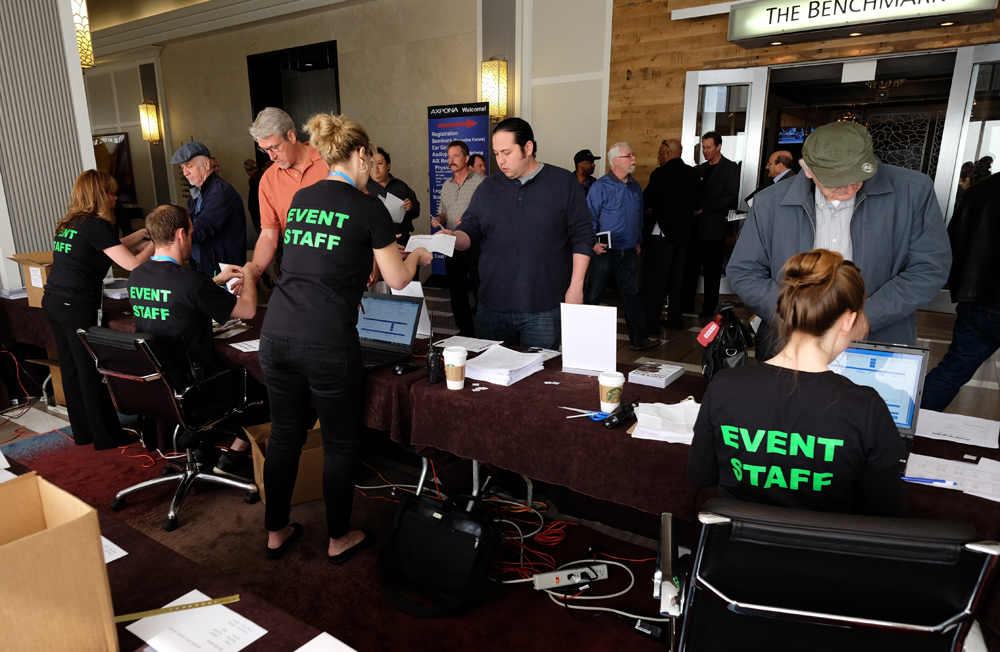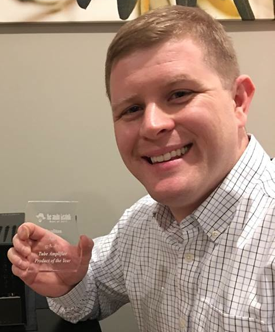
This article could have been titled, “The Beatnik’s Wife Attends an Audio Show.” I attended my first big audio shows last year, and I was blown away by how much work there is behind the scenes to be ready when the crowds show up. Thinking about the amount of behind the scenes work involved to set up for a show, it’s pretty much pulling off a miracle to get decent and maybe even great sound. So, I asked a couple of guys to give me their insider’s perspective on how audio shows come together. Constantine Soo, who owns the California Audio Show, shared his insider’s view as a show owner, and Mark Sossa of Well Pleased Audio Vida shared his perspective as a show exhibitor.
Insider’s View as a Show Owner
 We began our conversation with a horror story as Constantine and Jack remembered when the Rocky Mountain Audio Show had to be evacuated due to a fire, well actually a fire alarm and some smoke. A component shorted out in an exhibitor’s room causing smoke in several of the adjacent rooms and triggering the alarm. Anyone who attended this show, probably remembers this fire that wasn’t and standing in the hotel parking lot until cleared to go back inside.
We began our conversation with a horror story as Constantine and Jack remembered when the Rocky Mountain Audio Show had to be evacuated due to a fire, well actually a fire alarm and some smoke. A component shorted out in an exhibitor’s room causing smoke in several of the adjacent rooms and triggering the alarm. Anyone who attended this show, probably remembers this fire that wasn’t and standing in the hotel parking lot until cleared to go back inside.
According to Constantine, hotels are generally great for audio shows, but there can be some issues. The most common complaint he used to hear was about the walls in the hotel rooms, especially thin air walls, which don’t provide enough isolation for the sound if there is another exhibitor on the other side.
However, improvements have made his venue better; for example, the Hilton hotel where his show is located now has nine-foot ceilings in all of the regular rooms. Another improvement is that at most shows, exhibitors are set up in every other room providing a buffer which helps with noise isolation. Tube traps and tuning cones are just a couple of ways that exhibitors can further refine the sound in their exhibition space.
Sketchy WiFi used to be a problem, but the availability of digital phones and creating personal hot spots makes streaming from the internet a non-issue these days, which is especially good for digital systems.
Constantine’s Tip for Exhibitors: Help attendees who visit your room enjoy the listening experience by politely encouraging them to take lengthy conversations out to the hall.
Insider’s View as an Exhibitor
 “I approach a show with simplicity,” was the first thing Mark said. “By that, I mean I try to have a system that most people could realistically see in someone’s living room.” This approach enables him to minimize the number of components and the size of these components he takes to a show while still putting together a really good system for show goers to enjoy.
“I approach a show with simplicity,” was the first thing Mark said. “By that, I mean I try to have a system that most people could realistically see in someone’s living room.” This approach enables him to minimize the number of components and the size of these components he takes to a show while still putting together a really good system for show goers to enjoy.
“You have to put together a system that sounds great, and by and large in these small hotel rooms, you can’t expect a large, massive loudspeakers and high-powered amps to work properly in a space like that. So, I have a smaller set up that could work well in a conventional home. I know some people will get plants and lamps and all kinds of things to dress up a room. All of that stuff costs money, takes up room and adds to the complexity of a show. People know they are going to a hotel to listen to a temporary setup. It’s like you are putting up a tent. It’s not a dealer’s showroom,” he explains. “If the equipment itself is excellent, even in that type of environment, it is still going to sound very good because it is very good. It is going to shine!”
Even with keeping things simple, Mark says it’s still a few boxes, a couple of sets of cables, a pair of loudspeakers and maybe a couple of other components. He admits that he probably takes less to the show than the next guy, but he learned early on that the more things he takes and tries to put together, the more he is opening himself up to things going wrong. Still packing for a show requires a detailed checklist with every item covered. Mark ships his products to the show on a pallet that gets picked up weeks before the event, and he sees them again in his assigned room when he gets to the hotel. If the larger shows didn’t co-ordinate shipping, it would be much more difficult according to Mark.
Mark’s Tip for Show Attendees: If you want to evaluate a specific piece of equipment, let the exhibitor know so that they can arrange a private audition. They are usually more than happy to accommodate you, and, if at all possible, happy to play music you are familiar with and would like to use for evaluation.
